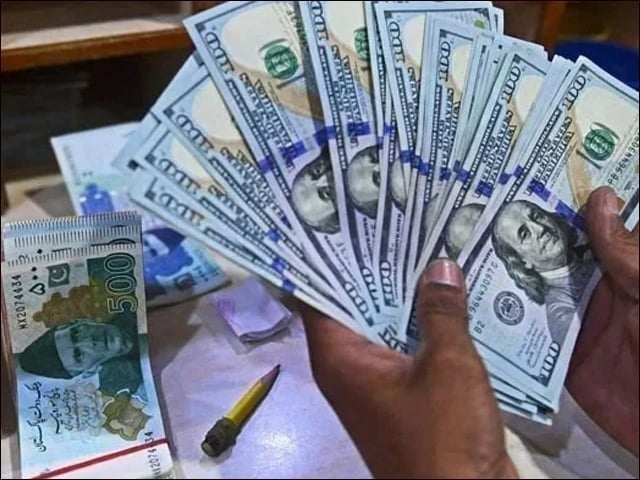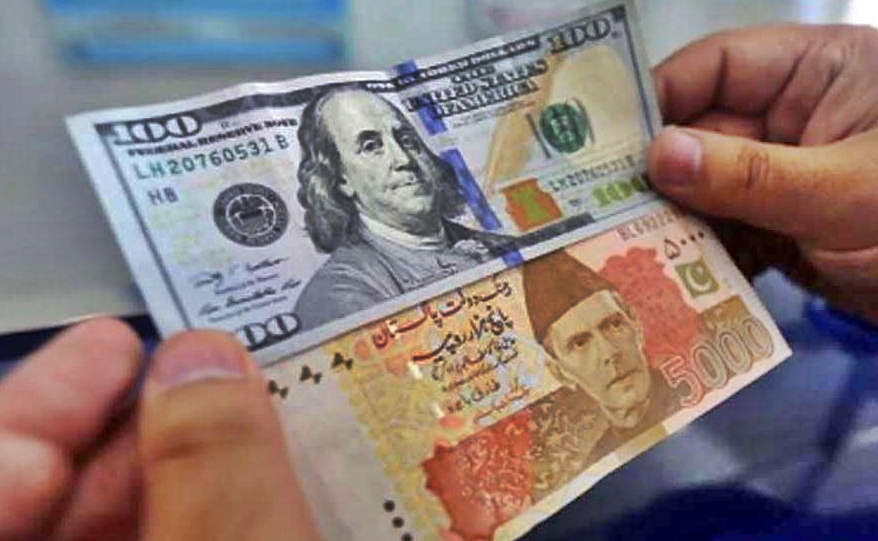ISLAMABAD:
In interbank trading on Tuesday, the Pakistani rupee gained Rs.1.04 against the US dollar, marking its 20th consecutive recovery session. It ended the day at Rs.285.72, down from the previous day’s closing of Rs.286.76.
The purchasing and selling values of the dollar on the open market were Rs283.5 and Rs286.3, respectively, according to the Forex Association of Pakistan (FAP).

Rupee gains Rs1.04 as it continues to rise against the US dollar
According to the State Bank of Pakistan (SBP), the price of the Euro dropped by Rs3.34 to settle at Rs299.56 vs the previous day’s closing of Rs302.90.
A decline of Rs4.08 was seen in the exchange rate of the British Pound, which was sold at Rs345.42 as opposed to the last closing of Rs349.50, while the Japanese Yen decreased by 01 paisa to end at Rs1.90.
The exchange rates for the Saudi riyal and the Emirates dirham fell by 29 and 28 paisa, respectively, to settle at Rs 77.78 and Rs 76.17.
An rise in the supply of dollars might be blamed for the rupee’s ongoing gain. Recent trade data that show an increase in export revenues and a large decrease in import payments in September compared to August further reinforces this.
According to data from Topline Research, the Pakistani rupee continues to beat the majority of other global currencies on a daily basis even if many of them continue to lose value in comparison to the US dollar.
According to recent reports, the government’s crackdown on currency smuggling has enhanced export earnings and the formal channels for employees’ remittances.
It’s interesting to note that there have been conversations in the market about how black marketplaces provide the US dollar for less than official markets do (measured in rupee value).
A treasury firm predicted that during the present cycle of appreciation in the interbank market, the rupee would stabilize around Rs285/$. However, the sustained crackdown on currency smuggling may cause the rupee’s surge to go above this level. However, it’s crucial to keep a tight eye on this scenario because excessive appreciation might have an impact on imports and exports.
Official currency markets appear to have ignored a minor decline in the nation’s SBP-held foreign exchange reserves brought on by last week’s foreign loan repayments. This decline follows a small increase in the prior week, demonstrating the intricate interplay of factors affecting the value of the Pakistani rupee.




